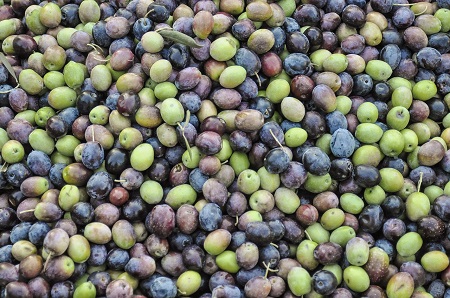
Register with Plumtri!
Register on plumtri as an Individual or as an Organisation to gain access to all of its useful features and remain updated on the latest R&I news, events and funding opportunities.
-
 Welcome to plumtriA platform for Research & Innovation
Welcome to plumtriA platform for Research & Innovation -
 Looking for Funding?Check out the current open calls
Looking for Funding?Check out the current open calls -
 Register today to start receiving our monthly newsletter
Register today to start receiving our monthly newsletter -
 Looking to partner up?Search our list of registered profiles
Looking to partner up?Search our list of registered profiles -
 You have questions on a particular funding programme?
You have questions on a particular funding programme?
Project OPoBicell - Transforming Olive Pomace into Bioactive Compounds and Cellulose: A Sustainable Innovation

The demand for sustainable practices in the food and pharmaceutical industries has led to innovative research projects transforming waste into valuable products. One such byproduct, olive pomace, offers significant environmental challenges. Through advanced scientific processes, researchers have found ways to extract valuable bioactive compounds and nanocrystalline cellulose (NCC) from olive pomace, transforming waste into ingredients with wide-ranging applications.
Introduction to Olive Pomace and the Need for Sustainability
Olive oil production is a booming industry, especially around the Mediterranean (Mazzotti, 2004). Olive oil is a staple in many diets and is valued for its health benefits, particularly for heart health (Foscolou et al., 2018). However, the production process leaves behind substantial waste. For every Liter of olive oil produced, approximately two kilograms of olive pomace—a thick, pasty residue composed of olive skin, pulp, and seeds—are generated (Khdair et al., 2020). This pomace is often discarded or used in limited ways, like fertilizer or animal feed, but these uses fail to fully address the environmental challenges associated with it. Improper disposal of pomace can pollute water sources, increase greenhouse gas emissions, and contribute to land degradation (Muscolo et al., 2019).
Recognizing these issues, scientists and researchers from Turkey and Malta launched a project to develop sustainable solutions for olive pomace, aiming to turn waste into valuable products. This project focuses on extracting bioactive compounds with health-promoting properties and producing nanocrystalline cellulose (NCC), a versatile material useful across multiple industries.
Extracting Valuable Compounds
One of the major applications in this project is the extraction of phenolic compounds from olive pomace. Phenolics are naturally occurring compounds in plants that have powerful antioxidant properties, which help neutralize harmful free radicals in the body (Cosme et al., 2020). These free radicals can cause cell damage, leading to chronic diseases such as cancer, heart disease, and neurological disorders (Santo et al., 2016). Unfortunately, in olive oil production, most phenolic compounds stay in the pomace rather than the oil (Goldsmith et al., 2014). Therefore, by repurposing the pomace, researchers can access these compounds and use them for their health benefits.
To extract phenolic compounds efficiently, eco-friendly techniques like supercritical CO₂ extraction and ultrasound-assisted extraction are used. Supercritical CO₂ extraction uses carbon dioxide at high pressure and temperature to dissolve and extract the phenolics from the pomace. This process is particularly beneficial because it avoids harsh chemicals, ensuring a cleaner and safer extract. The CO₂ evaporates once the pressure is lowered, leaving behind a pure extract with minimal environmental impact.
Ultrasound-assisted extraction, another green method, uses high-frequency sound waves to break down cell walls in the pomace, releasing the phenolics. It’s a quicker and less energy-intensive method, making it ideal for large-scale production. Both extraction methods help reduce waste, keep the final product chemical-free, and align with sustainable practices.
Health Benefits of Phenolic Compounds
Phenolic compounds are highly valued for their numerous health benefits. They act as antioxidants, which are essential in fighting oxidative stress in the body. Oxidative stress is a harmful process linked to inflammation, cancer development, and cardiovascular diseases (Li et al., 2014). By including phenolic-rich extracts in diets, individuals may be able to reduce the risk of these chronic conditions. Some phenolics also exhibit anti-inflammatory properties, which is crucial in managing conditions like arthritis (Chojnacka et al., 2021) and inflammatory bowel diseases (Caban et al., 2023).
Recent research suggests that phenolic compounds from olives, particularly oleuropein and hydroxytyrosol, have anticancer properties (Lia et al., 2024). These compounds can hinder cancer cell growth and even induce cancer cell death. Additionally, they support heart health by lowering blood pressure and cholesterol levels. Given these benefits, phenolic compounds have broad applications in food supplements, functional foods, and pharmaceuticals.
Bioactive Compounds in Food and Medicine
The extracted bioactive compounds from olive pomace have significant applications in the food and pharmaceutical industries. In food, these compounds can be incorporated as functional ingredients, offering health benefits beyond basic nutrition (Madureira et al., 2021). Functional foods, like yogurt, beverages, and snack bars, often include added bioactive compounds to improve consumers’ health. Olive-derived phenolic compounds could offer natural, antioxidant-rich options for consumers seeking to support their immune systems, manage cholesterol levels, or reduce inflammation through diet.
In the pharmaceutical industry, phenolic compounds have promising potential in preventive medicine. For example, supplements containing phenolic extracts could be used to support cardiovascular health, reduce inflammation, or provide antioxidants (Sarankar et al., 2023). The anticancer properties of olive-derived phenolics are particularly intriguing for researchers. Early studies show that these compounds can inhibit the growth of cancer cells, and further research could reveal even greater potential as natural, complementary therapies for cancer prevention and management.
Characterization and Testing of Bioactive Compounds
To ensure the quality and potency of these bioactive compounds, rigorous testing is essential. Using high-performance liquid chromatography (HPLC), researchers can accurately measure the phenolic content in the extracts, guaranteeing consistency and purity. HPLC works by separating and quantifying each compound within a mixture, allowing scientists to create a detailed “profile” of the phenolic compounds in each extract. This information is critical for quality control in the food and pharmaceutical industries, where precise dosages are necessary for safety and efficacy.
In addition to HPLC, other tests are conducted to determine the antioxidant and anticancer activities of the compounds. For example, the extracts undergo antioxidant assays to measure their ability to neutralize free radicals. These assays help verify the health benefits of the extracts, ensuring they meet the necessary standards for functional food or pharmaceutical use.
Collaboration for a Greener Approach
One of the most impactful aspects of this project is the collaboration between Turkey and Malta. The project combines the unique strengths of institutions in each country to maximize its environmental and scientific impact. Turkish institutions bring expertise in phenolic extraction techniques and NCC production, while Maltese institutions focus on testing bioactivity, especially in cancer research.
This cross-border collaboration enables knowledge exchange and resource-sharing, amplifying the project’s sustainability impact. Both countries benefit from a broader range of insights, with researchers learning from each other’s techniques and refining their methods through shared feedback. This collaborative model not only enriches the research but also paves the way for future innovations in waste management and sustainability across Mediterranean agro-food systems.
Future Applications and Environmental Impact
The success of this project sets the stage for future applications and larger-scale implementations. With increased focus on sustainability, researchers envision expanding the use of these bioactive compounds and nanocrystalline cellulose beyond food and medicine. For example, nanocrystalline cellulose has applications in packaging materials, water filtration systems, and even cosmetics. Its biodegradable nature makes it an attractive alternative to synthetic materials, further contributing to environmental conservation.
By reducing waste and creating valuable products from olive pomace, this project presents a sustainable model for the olive oil industry. Through scientific innovation and international collaboration, the project addresses waste challenges while generating economic and environmental benefits. As this model gains traction, it may inspire similar approaches for other agricultural byproducts, promoting sustainable practices across various industries.
Conclusion
Transforming olive pomace into bioactive compounds and cellulose represents a significant advancement in sustainable agriculture and food production. By leveraging eco-friendly extraction methods, rigorous testing, and international collaboration, researchers have unlocked the potential of olive pomace as a source of health-promoting compounds and industrial materials. This approach not only provides new applications for olive byproducts but also offers a model for waste management that aligns with environmental and economic goals.
In the coming years, as more research and development are dedicated to bioactive compounds and NCC, this project could pave the way for new products in health, food, and environmental conservation. By embracing such innovations, we move closer to a future where sustainability and technological progress work hand-in-hand for the benefit of both people and the planet.
Funding
OPoBicell was funded by Xjenza Malta and the Scientific Technological Research Council of Turkey (TUBITAK) through the MCST-TUBITAK 2021 Joint Call for R&I projects.
To view references please download the official article from the below link.
Information, image and logo source: Karen Attard, Dr. Frederick Lia
Attachment: External Link
